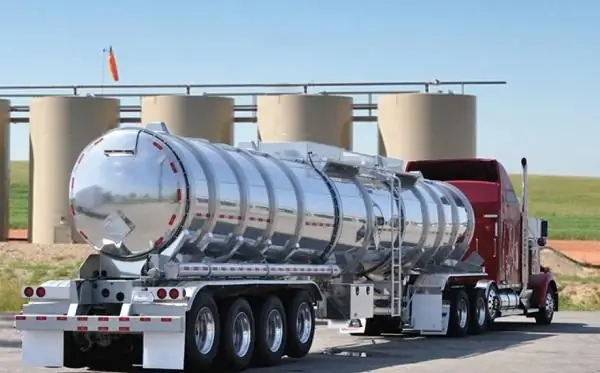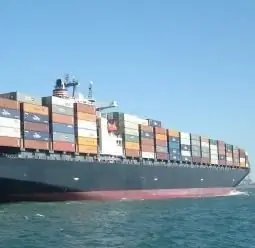2026 Author: Howard Calhoun | [email protected]. Last modified: 2025-01-24 13:10:33
Delivery conditions are a set of legislative acts that regulate how and in what terms the goods will be transferred from side to side, how they will be paid, insured, who is responsible for safety at a particular stage of transportation, etc..

A significant part of the world trade is accounted for by international trade, which creates the need to unify the rules for the carriage of goods while complying with national laws. For this purpose, for almost 80 years, the International Rules for the Interpretation of Trade Terms (Incoterms) have been issued, which contain the main terms of delivery.
It must be said that the use of Incoterms in our country is advisory. But if the contract contains a reference to the basic conditions established by the rules, then their observance becomes mandatory. For the rest, you need to be guided by the fourth section of the Civil Code of the Russian Federation, which indicates the procedure for applying certain business practices (Article 1211).
Currently, Incoterms 2010 edition is used for trading operations. These rules contain eleven main provisions in whichterms of delivery are also included. Some of them are not valid for one mode of transport, but for the entire chain of carriers. The regulations differ from the previous edition (2000) in that they introduced the DAT and DAP sections, which replaced the delivery terms DAF, DDU, DEQ and DES.

The term DAF in the old rules meant that the seller delivered the goods to the buyer at the named point or place at the border (before the goods crossed the customs border of the buyer's side). At the same time, the goods have passed customs procedures for export and have not yet been unloaded from the vehicle. Thus, the delivery item will still be subject to customs procedures for import.
The Incoterms Rules (2010 edition) contain seven basic procedures for all modes of transport and four procedures for inland water transport and maritime transport. The first type of rules include: DPP (goods delivered duty paid), DAP (delivered to destination), DAT (goods delivered to the customs terminal), EXW (delivery ex works), FCA (delivery free carrier), as well as CIP and CPT, where in the first case the terms of delivery indicate that the carriage and insurance are paid to some place, and in the second case only the carriage is paid to a certain point.

FOB delivery terms, like FAS, CIF and CFR, assume that the cargo leaves the port and also arrives at the port. These rules existed in the previous edition, however, in the new version, the term "ship's side" was introduced,which replaced the concept of "handrails" as the point of delivery for all but FAS. The terms of delivery of the last rule assume that the operation is completed if the seller has completed the necessary customs export measures, brought the goods to the port specified in the contract, placed them along the side of the vessel on a berth, barge, etc. Import procedures, including payment of customs duties, here the seller is in charge.
The FOB procedure assumes that the seller brought the goods on board the vessel specified in the contract, CIF that the seller delivers the goods on board, pays freight to destination and insurance (usually with minimal coverage), and CFR that the supplier is responsible includes only delivery of cargo to a specific port with freight paid. The order of deliveries is selected in each case, because. each port determines the conditions under which it can work with certain ships and cargoes.
Recommended:
What is Incoterms? Terms and conditions of delivery Incoterms

In order to avoid misinterpretation of the terms used by participants in foreign trade activities when concluding contracts, and subsequent disputes and proceedings, the International Chamber of Commerce developed unified international trade rules in 1936
Delivery Club food delivery service: feedback from employees and customers

The Delivery Club service is used by millions of Russians every day, because it allows you to save on the delivery of food and drinks and receive bonuses for purchases. An order at the "Delivery Club" is possible through a mobile application, on the website or by calling the delivery service. According to reviews, "Delivery Club" is the leader in the list of Russian delivery services and is one of the most famous companies
Terms of delivery CPT. Delivery on CPT terms

Logistics has been massively developed in recent years. This is facilitated by some growth in the development of regions, in connection with which the importance of cargo transportation in the country has increased. Of course, the number of entrepreneurs who would like to do this has also increased significantly
DDP terms of delivery. Delivery of goods on DDP terms

The transportation business is a dynamically developing area of the economy. Every year more and more new players come to it, some of which have little idea of work in this industry. To fix this, we bring to your attention an article that describes the terms of delivery of DDP
Delivery condition - FCA. Delivery on FCA terms

FCA (Free Carrier) is a delivery condition under which the buyer is responsible for almost all transportation. He can choose transport, use his own delivery channels, conclude contracts for the supply of goods. This delivery on FCA terms differs from all standard methods of transportation accepted both in our country and around the world

